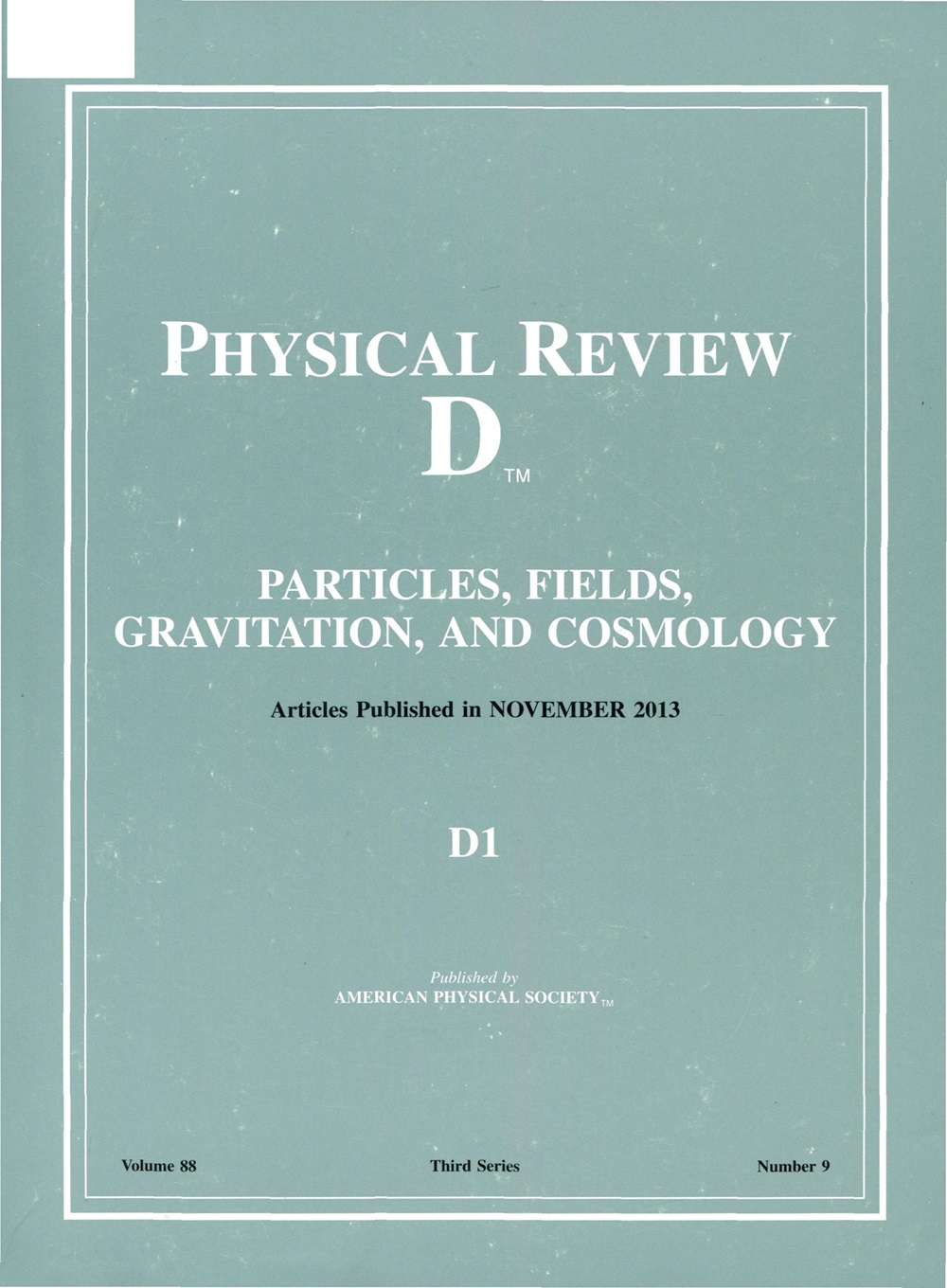Enhancing the sensitivity to seesaw mechanism predictions in gauged B−L scenarios
IF 5
2区 物理与天体物理
Q1 Physics and Astronomy
引用次数: 0
Abstract
New gauge bosons coupled to heavy neutral leptons (HNLs) are simple and well-motivated extensions of the Standard Model. In searches for HNLs in proton fixed-target experiments, we find that a large population of gauge bosons (Z′) produced by proton bremsstrahlung may decay to HNLs, leading to a significant improvement in existing bounds on the (求助全文
约1分钟内获得全文
求助全文
来源期刊

Physical Review D
物理-天文与天体物理
CiteScore
9.20
自引率
36.00%
发文量
0
审稿时长
2 months
期刊介绍:
Physical Review D (PRD) is a leading journal in elementary particle physics, field theory, gravitation, and cosmology and is one of the top-cited journals in high-energy physics.
PRD covers experimental and theoretical results in all aspects of particle physics, field theory, gravitation and cosmology, including:
Particle physics experiments,
Electroweak interactions,
Strong interactions,
Lattice field theories, lattice QCD,
Beyond the standard model physics,
Phenomenological aspects of field theory, general methods,
Gravity, cosmology, cosmic rays,
Astrophysics and astroparticle physics,
General relativity,
Formal aspects of field theory, field theory in curved space,
String theory, quantum gravity, gauge/gravity duality.
 求助内容:
求助内容: 应助结果提醒方式:
应助结果提醒方式:


